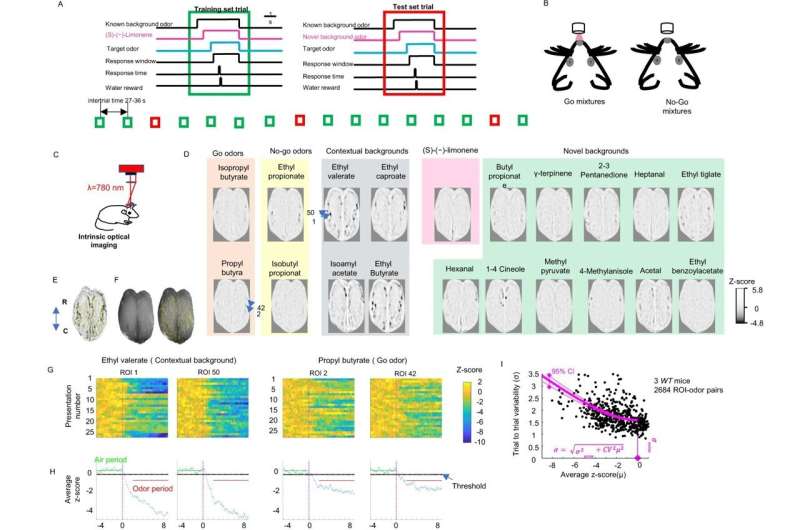This article has been reviewed according to Science X's editorial process and policies. Editors have highlighted the following attributes while ensuring the content's credibility:
fact-checked
peer-reviewed publication
trusted source
proofread
New study may help to explain smell challenges in individuals with autism

New research from New York Institute of Technology College of Osteopathic Medicine (NYITCOM) could help explain how the sense of smell is impacted in individuals with autism.
Individuals with autism have an "insistence on sameness," and often avoid unfamiliar elements, including new smells and foods, which can impact their quality of life. While many studies have focused on the behavioral features of autism, additional research is needed to help explain its sensory aspects.
Now, a study led by NYITCOM Assistant Professor of Biomedical Sciences Gonzalo Otazu, Ph.D., published in the journal Nature Communications, analyzes a mouse model of autism and reports differences in the neurological processes responsible for smell.
The team trained two groups of mice—one group with a mutation in a gene linked to autism (CNTNAP2 knockout mice) and one neurotypical group—to recognize familiar scents. When they successfully identified the target scent, the mice were rewarded with a sip of water. Both groups succeeded in identifying the target.
Then, the mice were given a more challenging task: identifying target scents as unfamiliar odors were introduced in the background. Otazu, an electrical engineer, likens this task to Internet captchas, which require humans to visually identify letters and numbers set in a busy or obscured background. While the neurotypical mice were able to "filter out" new background odors and identify the target scents, the CNTNAP2 knockout mice struggled to do so.
To better understand where the processing error was occurring in the brains of the CNTNAP2 knockout mice, the researchers visualized the neural activity at the input of each animal's olfactory bulb, the part of the brain that initially processes smell. An imaging technique called intrinsic optical imaging was used to visualize neural activity near the surface of the olfactory bulb. Here, "scent signals" are transmitted to other parts of the brain for further processing, playing a key role in how the brain computes smell.
However, the input signals were very similar between the CNTNAP2 knockout mice and neurotypical mice. This suggests that scent processing in the autism model was impaired at a later step—after signals were processed at the olfactory bulb input. This finding was also replicated when the researchers "reverse-engineered" the brain's processes for identifying target scents in unfamiliar backgrounds.
Leveraging machine learning, a form of artificial intelligence that uses algorithms to replicate the brain's processes, the team applied the olfactory bulb input signals to a sophisticated algorithm that matched the high performance of neurotypical mice. The neurotypical mice filtered out novel background scents and identified targets, but this complex processing was impaired in CNTNAP2 knockout mice.
"We speculate that the olfactory bulbs in the mouse model of autism might be more easily overwhelmed by processing new background odors," said Otazu. "These findings illustrate why more studies related to the sensory aspect of autism are so important. By documenting the neural processes in the mouse model of autism, our findings may help to explain the brain circuitry of humans with autism and one day lead to advancements that improve these individuals' quality of life."
More information: Yan Li et al, Robust odor identification in novel olfactory environments in mice, Nature Communications (2023). DOI: 10.1038/s41467-023-36346-x





















